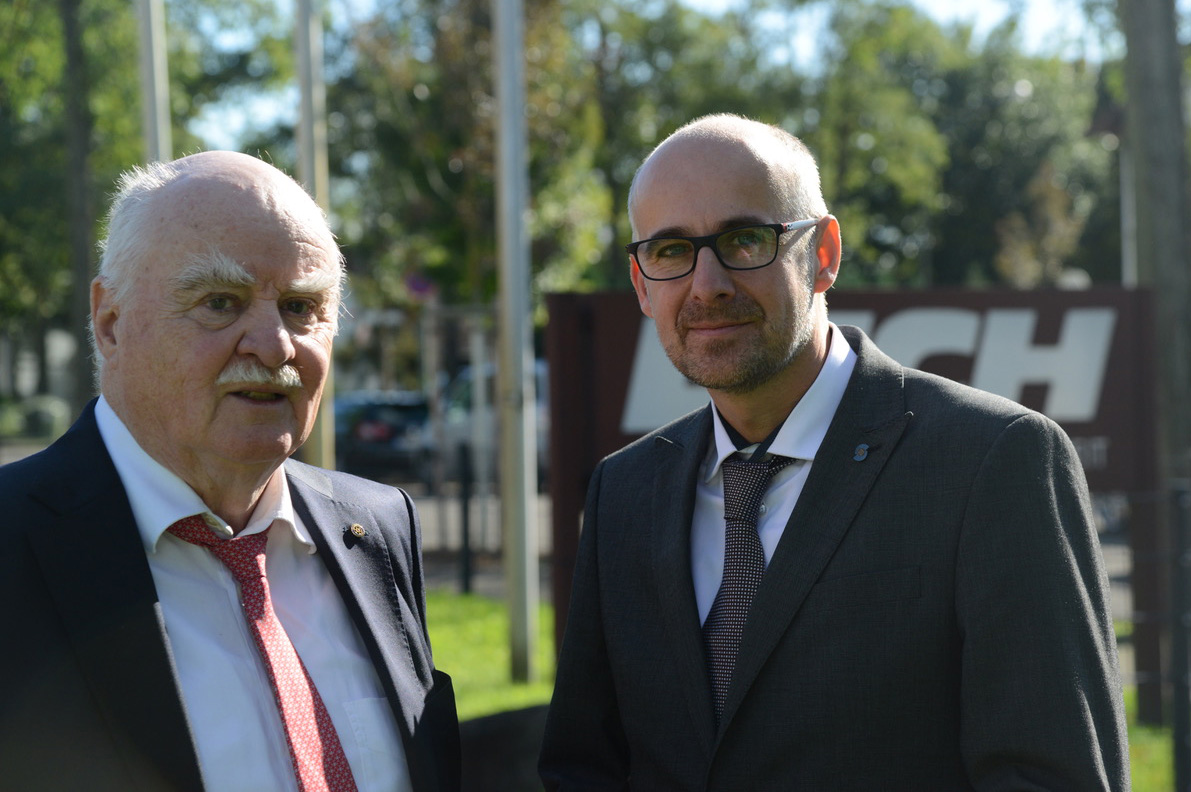“When I founded my diamond grindery in 1922, I never would have thought that Lach Diamant would one day be a pioneer in the manufacturing of diamond tools,” Jakob Lach, the founder of Lach Diamant, Germany, said in the early 1980s.
Even today, Lach Diamant, Germany, with its 95th anniversary maintains the tradition of grinding diamonds — for example for the dressing and profiling of conventional grinding wheels. The historical business segment of “jewelry diamond grinding” had its heyday — with 600 employed diamond grinders — at the end of the 1930s.
The development of the polycrystalline diamonds have directly or indirectly influenced our daily life since the end of the 1950s.
The discovery of Electrical Discharge Grinding for the forming of polycrystalline diamonds in 1978 was also the starting signal for a worldwide realignment in the woodworking and plastics processing industries — especially for the furniture and parquet flooring as well as the PCB industries.
The diamond tooling that was subsequently manufactured — milling tools, scoring saws, saw blades — increased the life of tools 3 to 5 months.
The foundation of Lach Diamond Inc., Grand Rapids, Mich., in 1982 was synonymous with the introduction of this groundbreaking technology on the North American market — documented by trade fairs in Louisville, Los Angeles and Atlanta.
Today Lach Diamond stands for 35 years of manufacturing and service of superior diamond tooling for wood and woodlike materials in the automotive, aircraft and wind engine industries.
In its anniversary year 2017, Lach Diamant, Germany, will exhibit at EMO in Hannover, the largest European trade show for tools and tooling machines, and the company will present how Lach diamond tools and grinding wheels have accelerated many technical innovations during the last 50 years.
To this day, Lach Diamant, Germany, is still a family owned company, in the second and third generation, managed by Horst Lach and Dipl.-Ing. Robert Lach.

Horst Lach (left), Dipl.-Ing. Robert Lach (right).
Contact Details
Related Glossary Terms
- dressing
dressing
Removal of undesirable materials from “loaded” grinding wheels using a single- or multi-point diamond or other tool. The process also exposes unused, sharp abrasive points. See loading; truing.
- gang cutting ( milling)
gang cutting ( milling)
Machining with several cutters mounted on a single arbor, generally for simultaneous cutting.
- grinding
grinding
Machining operation in which material is removed from the workpiece by a powered abrasive wheel, stone, belt, paste, sheet, compound, slurry, etc. Takes various forms: surface grinding (creates flat and/or squared surfaces); cylindrical grinding (for external cylindrical and tapered shapes, fillets, undercuts, etc.); centerless grinding; chamfering; thread and form grinding; tool and cutter grinding; offhand grinding; lapping and polishing (grinding with extremely fine grits to create ultrasmooth surfaces); honing; and disc grinding.
- milling
milling
Machining operation in which metal or other material is removed by applying power to a rotating cutter. In vertical milling, the cutting tool is mounted vertically on the spindle. In horizontal milling, the cutting tool is mounted horizontally, either directly on the spindle or on an arbor. Horizontal milling is further broken down into conventional milling, where the cutter rotates opposite the direction of feed, or “up” into the workpiece; and climb milling, where the cutter rotates in the direction of feed, or “down” into the workpiece. Milling operations include plane or surface milling, endmilling, facemilling, angle milling, form milling and profiling.
- profiling
profiling
Machining vertical edges of workpieces having irregular contours; normally performed with an endmill in a vertical spindle on a milling machine or with a profiler, following a pattern. See mill, milling machine.
- sawing machine ( saw)
sawing machine ( saw)
Machine designed to use a serrated-tooth blade to cut metal or other material. Comes in a wide variety of styles but takes one of four basic forms: hacksaw (a simple, rugged machine that uses a reciprocating motion to part metal or other material); cold or circular saw (powers a circular blade that cuts structural materials); bandsaw (runs an endless band; the two basic types are cutoff and contour band machines, which cut intricate contours and shapes); and abrasive cutoff saw (similar in appearance to the cold saw, but uses an abrasive disc that rotates at high speeds rather than a blade with serrated teeth).
